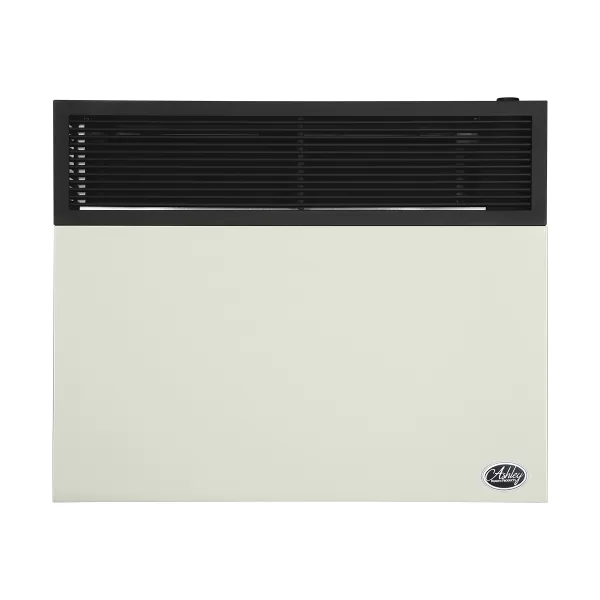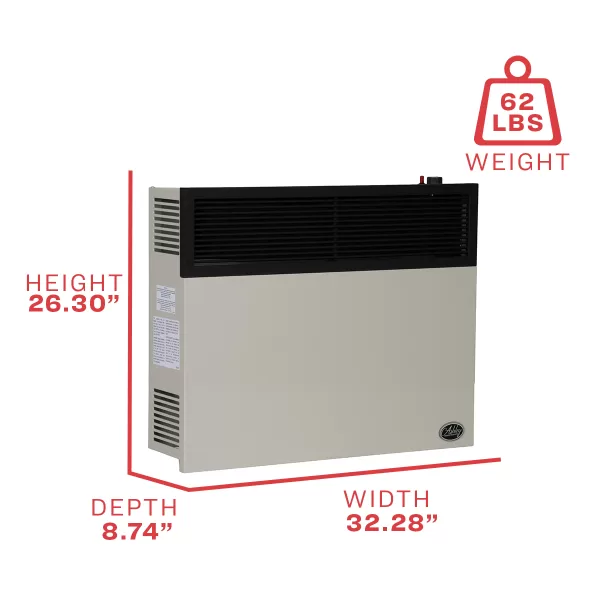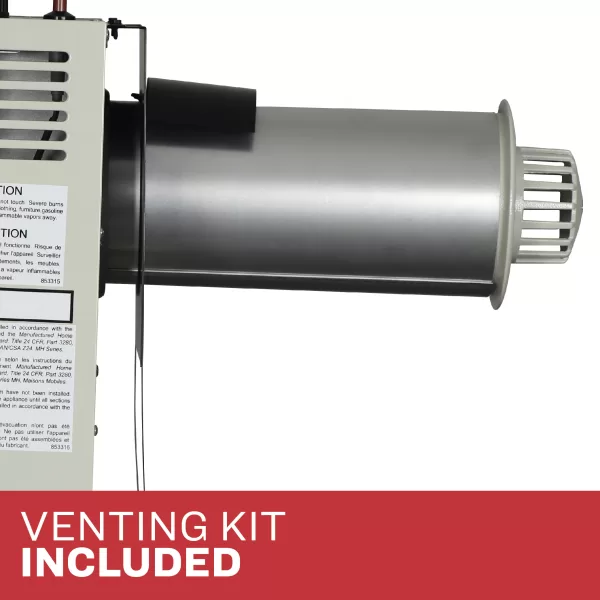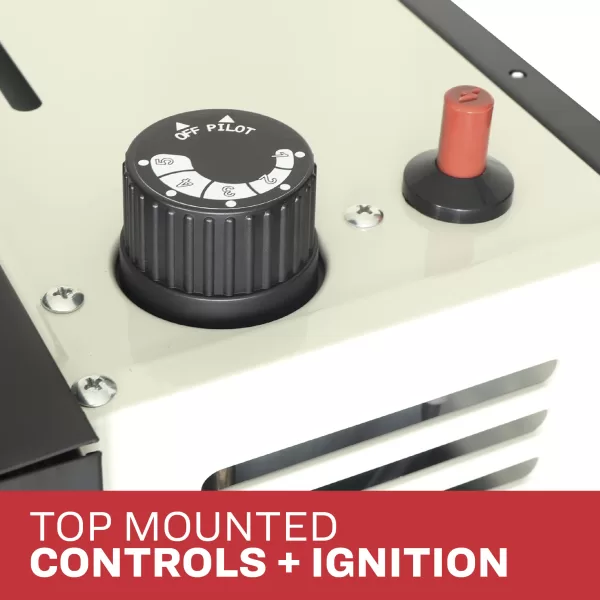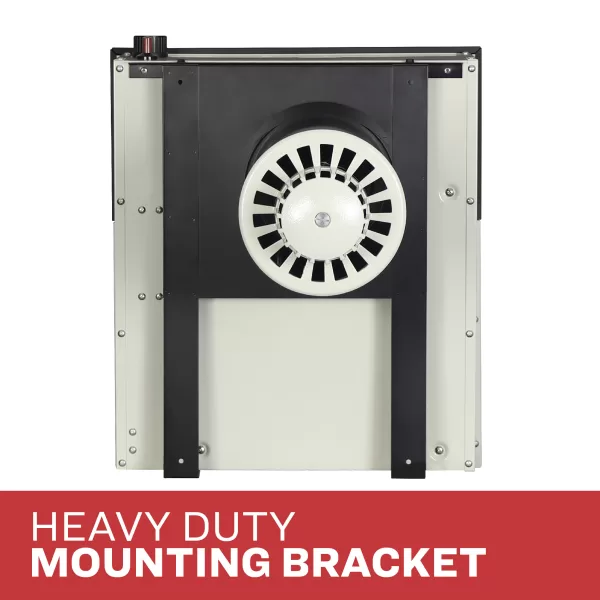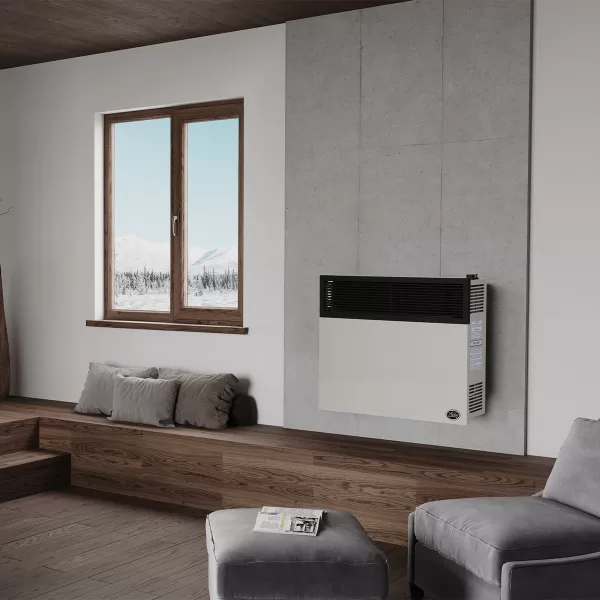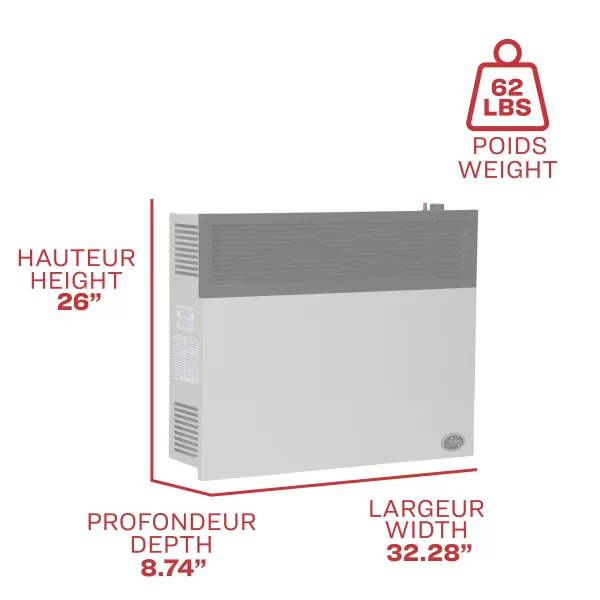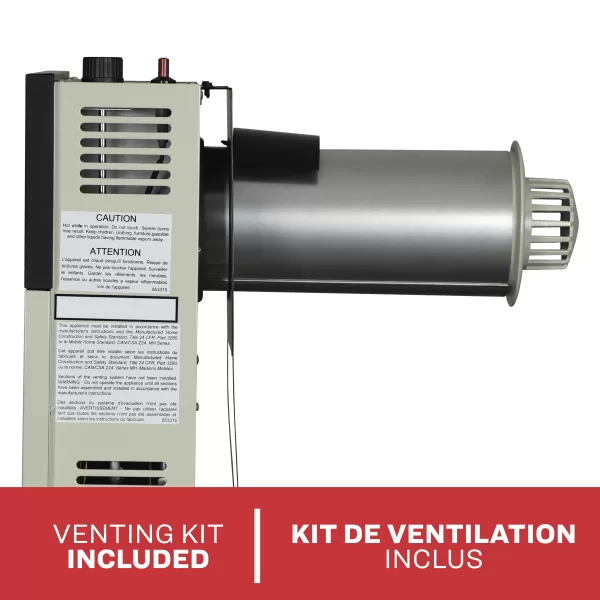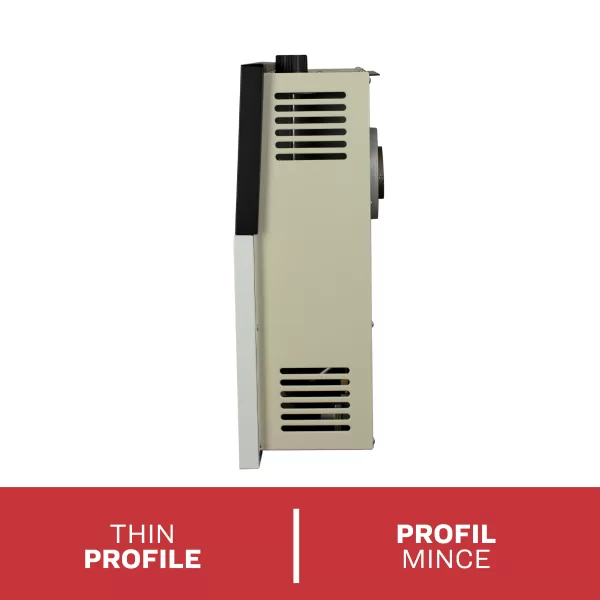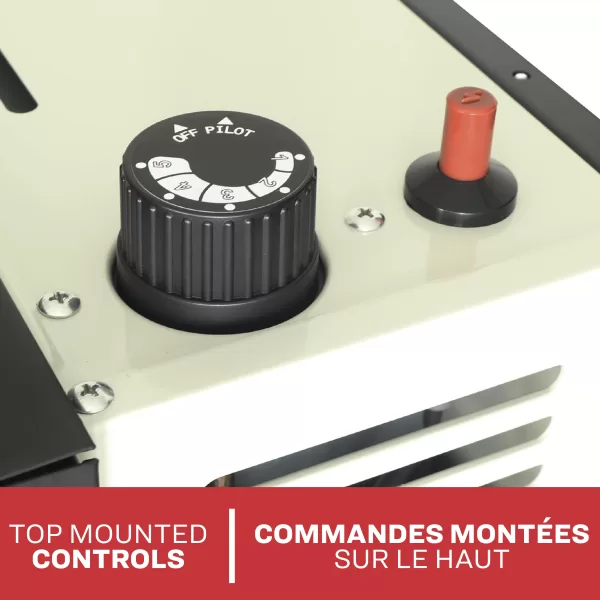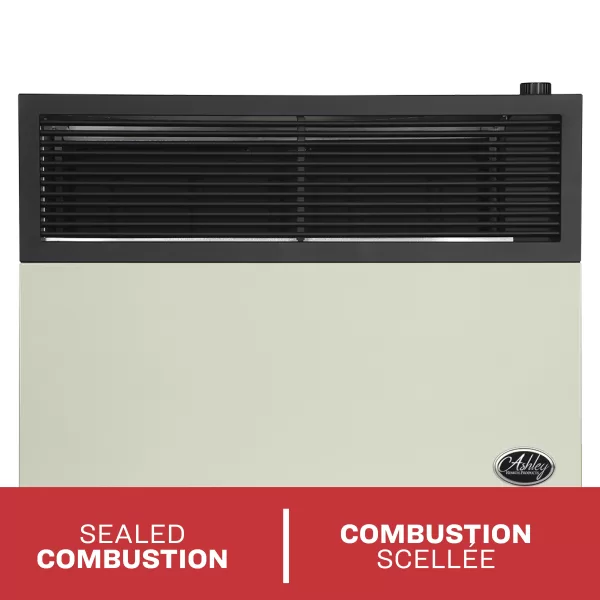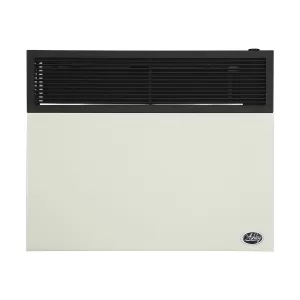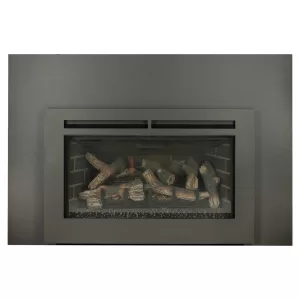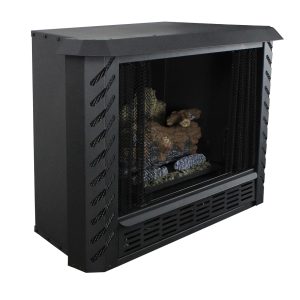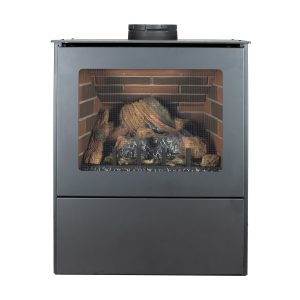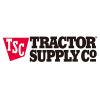Chauffage mural au gaz naturel à évacuation directe de 25 000 BTU
- Chauffe jusqu'à 825 pieds carrés
- Jusqu'à 25 000 BTU
- Gaz naturel
- Mobil-home approuvé
- Allumage piézo sans allumette
- Système de combustion scellée
- Kit de ventilation inclus

Description
Le radiateur mural à évacuation directe DVAG30N d'Ashley Hearth Products constitue la solution parfaite pour le chauffage par zones. La conception peu encombrante de la fournaise à ventilation directe se monte sur un mur extérieur et l'ensemble de ventilation réglable s'ajuste pour s'adapter aux murs de 4-1/2 pouces à 10 pouces d'épaisseur. Pour une chaleur propre et confortable quand et où vous le souhaitez, la flamme du gaz est complètement scellée à l'intérieur, loin de tout contact avec l'air ambiant. L'air nécessaire à la combustion est aspiré dans la chambre depuis l'extérieur par l'évent et les produits de combustion sont évacués directement vers l'extérieur. Seule une chaleur propre et douce, en circulation continue, est diffusée dans la pièce. Les fenêtres et les portes restent fermées car aucun air ambiant n'est utilisé pour la combustion. La fournaise murale au gaz naturel à évacuation directe DVAG30N est conçue pour chauffer jusqu'à 825 pieds carrés. Fort. et dispose d'une entrée de 25 000 BTU.
Caractéristiques
- Chauffe jusqu'à 825 pieds carrés
- Jusqu'à 25 000 BTU
- Gaz naturel
- Mobil-home approuvé
- Allumage piézo sans allumette
- Système de combustion scellée
- Kit de ventilation inclus
Modèle #
- DVAG30N
- La veilleuse de sécurité avec régulateur de pression intégré arrête complètement le flux de gaz en cas d'extinction de la veilleuse.
- Le brûleur à orifices en acier inoxydable permet un fonctionnement silencieux, ce qui en fait un outil de chauffage silencieux pour votre maison.
- Chauffe jusqu'à 825 pieds carrés
- Conçu pour être utilisé avec du gaz naturel
- Jusqu'à 25 000 BTU d'apport de chaleur
- Le système de combustion scellé est parfait pour les chambres et les espaces de vie
- Éclairage piézo incomparable pour des démarrages rapides
- Aucune ventilation compliquée à acheter ou à installer, le kit complet est inclus (comprend un écran thermique, un tuyau de ventilation, un tuyau d'admission d'air, un solin, un capuchon et une bielle).
- Approuvé pour une utilisation dans les maisons mobiles ou modulaires
Appareils de chauffage à ventilation directe – Garantie |
| Largeur assemblée (po) | 32.28 |
| Poids du paquet | 86 |
| Largeur du paquet | 35 |
| Hauteur du colis | 37.375 |
| Profondeur assemblée (po) | 8.74 |
| Profondeur du paquet | 11.75 |
| Hauteur assemblée (po) | 26.3 |

